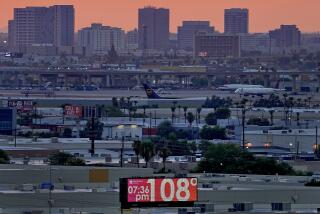Despite storms and floods, humans willingly ignore global warming

What do Manhattan and Miami have in common with ancient Pompeii? They are doomed places where the residents cannot imagine that the good times will ever end.
Superstorm Sandy got our attention -- like Mike Tyson walking into the house and punching our dog. And the certainty that more freakish, savage storms will pay a visit has made it tough for global-warming deniers to keep denying. But denial is not as tough to reckon with as obliviousness. Being oblivious to approaching doom is a consistent human trait. We are a hopeful, gullible and greedy species. Most of us imagine we can be the last one out of the burning casino with hundred-dollar bills stuffed in every pocket.
Last week, PBS broadcast Ken Burns’ new documentary, about the 1930s Dust Bowl, and provided a reminder of humanity’s unwillingness to acknowledge that what makes us rich today may kill us tomorrow. In the opening decades of the 20th century, real estate hucksters, railroad tycoons and even government agencies persuaded thousands of dirt-poor farmers to come to the dry and windy center of the Great Plains, plow up millions of acres of ancient grasslands and plant wheat.
There were several reasons this was a bad idea, but for a couple of unusually wet decades, bumper crops were the norm. Then, in the 1930s, inevitable drought returned. The land dried up and, quite literally, blew away in enormous black clouds that killed crops, livestock, children, old people and dreams. It was the worst man-made environmental disaster in American history.
Now, as we grow more aware that we face the worst man-made environmental disaster in the history of the world, we are proving to be no more wise than the imprudent farmers who tore up the buffalo grass. Rather than taking serious steps to curb the carbon emissions that are driving up temperatures everywhere, rather than being shocked by the rapid melting of the polar ice packs and mountain glaciers, rather than seeing drought-driven wildfires and monster storms as portents of things to come, we are redoubling our efforts to extract every last ounce of fuel from the dirtiest depths of the land.
The oil boom in North Dakota is turning that sparsely populated state into an American Arabia. Even bigger is the oil bonanza in western Canada. According to a Los Angeles Times report, recruiters from Alberta are scouring California and other states hoping to lure tens of thousands of workers north to the oil fields.
In a time of high unemployment and high gas prices, this seems like happy, hopeful news. But it is hope built on sand -- the vast deposits of oil sands that give up their black gold only through a process that requires a bottomless supply of water and poses huge environmental risks. The worst comes after the oil is extracted. That is when we burn it all up in our cars and factories and send the resulting emissions into the atmosphere.
On Sunday, the New York Times published a set of dramatic graphics showing how several coastal cities will be affected by rising sea levels that will be one result of global warming. Scientists say if immediate, dramatic measures are taken to reduce emissions, the seas may rise just 5 feet. New York City might be able to cope by erecting barriers, but Miami Beach would disappear. If the world hits just the modest emissions targets that have already been set, but largely ignored, sea level will go up 12 feet. That means all that will be left of Miami is a scattering of islands, while nearly a quarter of New York goes underwater.
But if we continue full speed ahead, drilling, fracking and burning it all up, then the coasts will see a 25-foot rise that swamps all of south Florida; all of Norfolk, Va.; big swaths of New York and Boston; every beach in California and, strangely enough, more than 60% of Sacramento.
Of course, this is all many decades in the future, our legacy to future generations. For now, in between the storms and wildfires, we will remain oblivious. After all, until the end actually came, Pompeii was a pleasant town with a fine mountain view.
More to Read
A cure for the common opinion
Get thought-provoking perspectives with our weekly newsletter.
You may occasionally receive promotional content from the Los Angeles Times.







